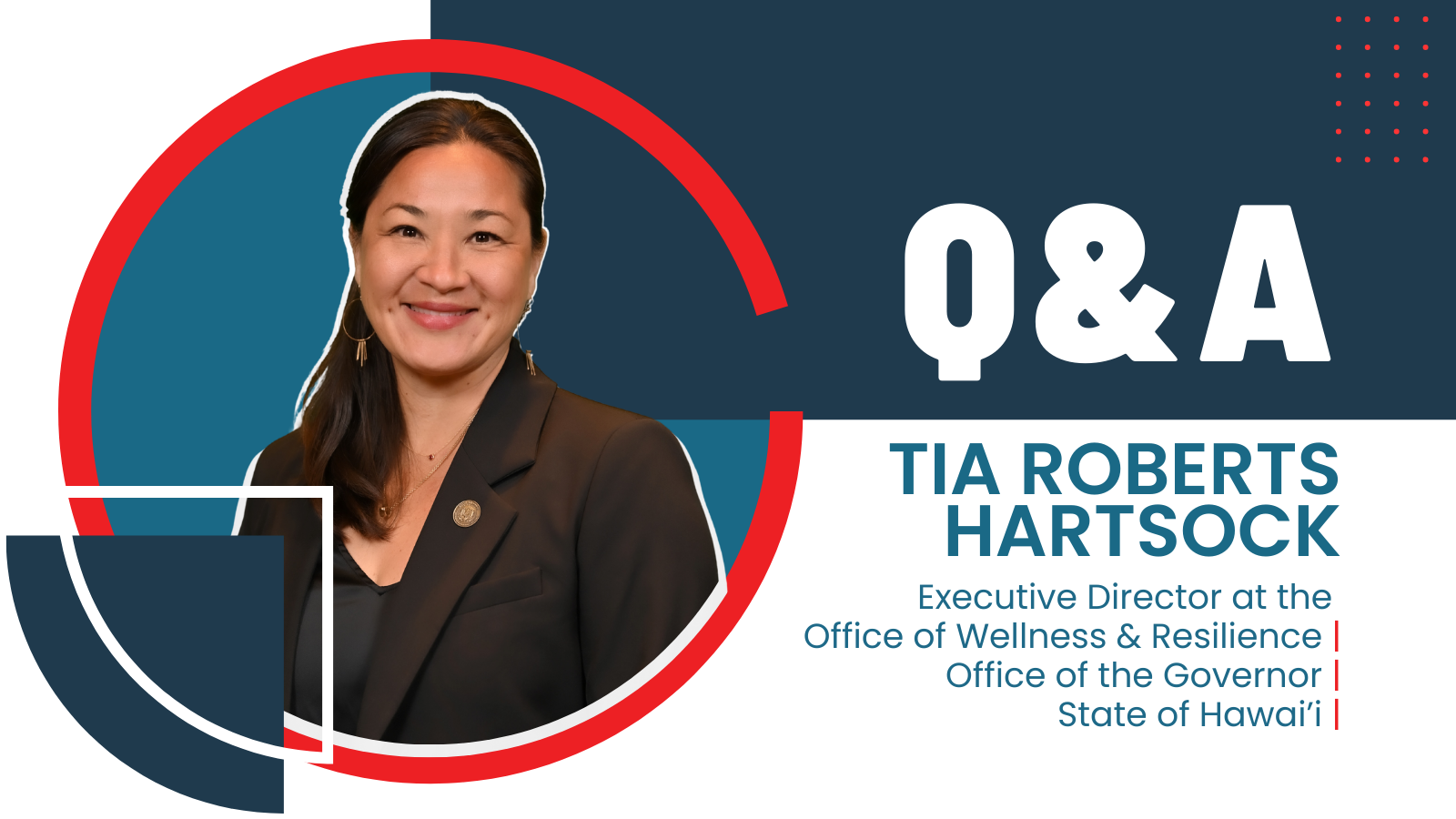Tia Hartsock is a mental health and wellness advocate and expert who has spent more than 20 years working to improve criminal justice and mental health systems in Hawai’i. Ms. Hartsock is a SAMSHA-certified Trauma-Informed Care trainer and a lecturer at the University of Hawai’i Thompson School of Social Work and Public Health. In early 2023, she was appointed Hawai’i’s first Director of the Office of Wellness and Resilience (OWR).
Before being named the Executive Director of OWR, your background was in social work, mental health, criminal justice, and trauma. In your experience, how do trauma, substance use, and poor mental health impact the life trajectories of people in Hawai’i who are involved with the criminal justice system?
In my experience, early adverse childhood experiences and social determinants of health in communities can impact the disproportionate representation of native Hawaiians and Pacific Islanders in our state systems. Past traumatic events in Hawaiʻi’s history unfortunately continue to impact these issues. The creation of policy continues to impact how Hawaiians utilize cultural practices to thrive and heal, specifically access to land and water. Systemic barriers need to be addressed to create balance and reintegrate systems of support for overall health and well-being. Our resilience is rooted in our well-being…this is critical to building healthy and resilient communities, and keeping the focus on well-being and how Hawaiians define it provides a good guide for all those who have the privilege to live in Hawaiʻi.
The Office of Wellness and Resilience has several goals, and one is to “establish new practices to improve system outcomes in … mental health, and criminal justice.” What are your strategies for identifying the practices that will improve criminal justice system outcomes in Hawai’i?
The Office of Wellness and Resilience has very broad goals to address systemic change by implementing trauma informed principles. One of the approaches is to look at the movement of other efforts over the years (including ancestral knowledge and practice) and learn how we can uplift and honor the work that has been done before us. The other is to create a community advocacy group with people who have lived experience in the systems, including the criminal justice system, to learn what needs to change and how it needs to change. If we can integrate and uplift voices across the state systems with people who have lived experience, this is when the change will occur. I also believe when we look for deficiencies in a system, we will find them. At the same time, if we look for strengths and what is working, we will also find those elements. Both are important to examine, and we plan to take the approach of building upon what is working, finding the champions, and letting them lead the conversation on how to improve our systems of care.
You co-developed a Native Hawaiian-specific Community Based Participatory Research (CBPR) model. What are the unique features of this model that are specific to the Native Hawaiian culture?
Back in graduate school, I had the amazing opportunity to work with practitioners and learn how they engaged communities in the program development process. This opportunity provided me a foundation for letting communities, people with lived experience, and people with ancestral knowledge inform the conversation. When policies are drafted, and programs are evaluated, focusing on how the community, family, or individual defines success is critical. To allow for communities, families, or individuals to change their minds on that definition and revisit those outcomes can also make a huge difference. If the definitions of success or failure are already defined going into a community, you have lost the essence of community-based work. Working with indigenous populations, including native Hawaiians, for me, the expectation that everyone needs to be on the same page and agree on everything every step of the way is an unfair expectation.
On a more personal note, what are some approaches to supporting wellness unique to the Hawaiian culture that you have adopted in your own life?
What a great question! I used to paddle when I was younger, and it was such an amazing experience to be in a canoe and learn the roles we all play in order to move the boat forward to get to our destination. This is such a beautiful model to think about how to work together every day. Understanding each person has a purpose in the canoe, and without people being present, communicating, and respecting the gifts of everyone in the canoe, the boat cannot move forward. This connection to the ocean/elements, my team/community, and myself continues to be essential in creating wellness in my life.
You have been certified to provide the SAMHSA’s GAINS Center training on How Being Trauma-Informed Improves Criminal Justice System Responses. What is a common misconception about trauma in Hawai’i, and how do you address it?
A common misconception related to trauma and trauma-informed care in Hawaiʻi is that this approach is for only those we serve (i.e., clients). I constantly try to talk about this work being half for those we serve and half for us as helpers. The approach to working with survivors of trauma needs to include the understanding that we are all survivors of trauma and we, as helpers, need to do this work, too. Understanding our triggers, understanding our growth and need to do organizational and self-care, and integrating the principles in all we do with ourselves, our coworkers, our families, and our community.
Like what you’ve read? Sign up to receive the monthly GAINS eNews!


